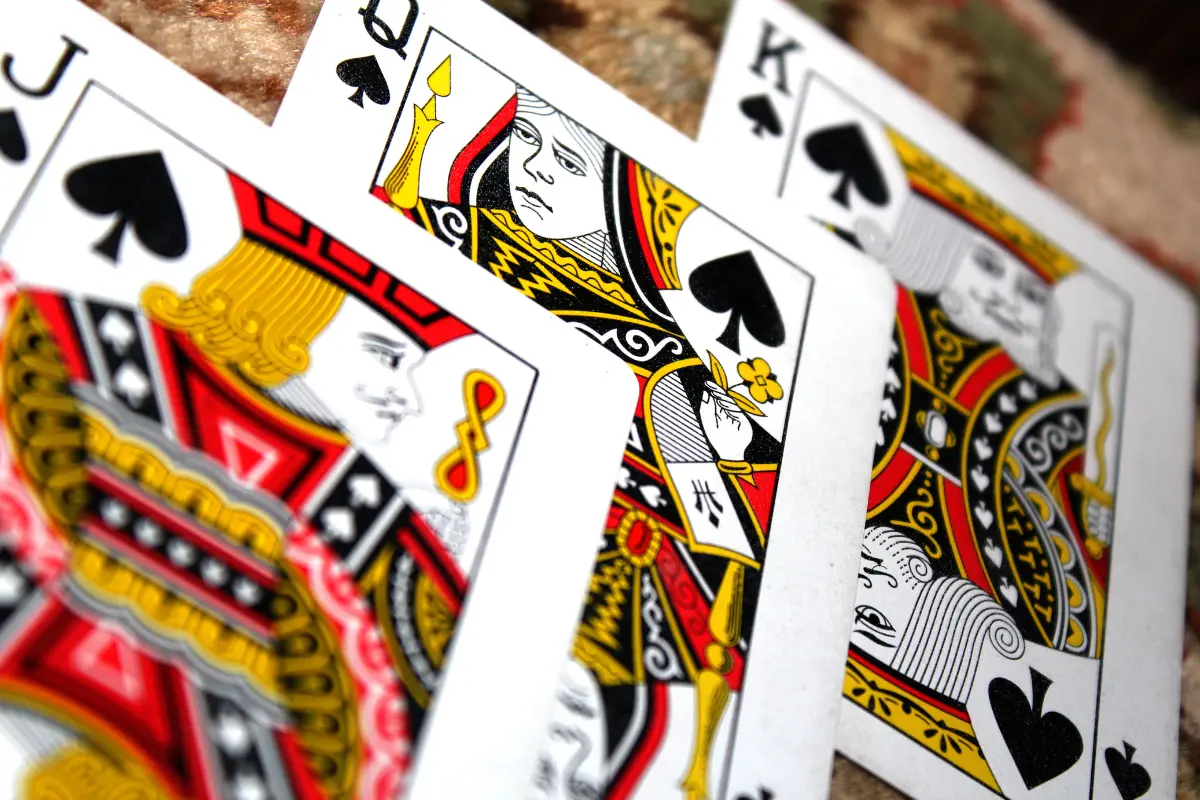A standard deck of playing cards is a versatile and widely recognized set of items used for a multitude of games, tricks, and even divination. While many people are familiar with the cards, few take the time to understand their structure and significance. This article dives deep into the details of what cards are in a deck, exploring the history, composition, and unique features of these fascinating tools.
A Brief History of Playing Cards
Playing cards originated in China during the Tang dynasty around the 9th century. They spread to Europe via the Middle East in the late 14th century, evolving over time into the standard deck we know today. Early decks were hand-painted, making them a luxury item, but the advent of printing technology in the 15th century made them more accessible to the general population.
The Composition of a Standard Deck
A standard deck of playing cards consists of 52 cards divided into four suits. Each suit contains 13 cards, including numbered cards (2 through 10) and face cards (Jack, Queen, King). Here’s a breakdown:
The Four Suits
Each suit represents a different category and has its own symbols and color scheme:
- Hearts (♥): Red-colored, often associated with emotions and love.
- Diamonds (♦): Red-colored, symbolizing wealth and prosperity.
- Clubs (♣): Black-colored, representing growth and creativity.
- Spades (♠): Black-colored, signifying wisdom and labor.
Numbered Cards (2-10)
The numbered cards in each suit are straightforward, featuring the numbers 2 through 10. These cards are also known as “pip cards” because of the small symbols (pips) that denote their value.
- 2 to 10 in Hearts, Diamonds, Clubs, and Spades: Each number corresponds to its value, with pips printed on the card for easy identification.
Face Cards
The face cards include the Jack, Queen, and King, each with unique illustrations and significance. They are higher in rank than the numbered cards.
- Jack (J): The Jack is often depicted as a young man or warrior. It ranks higher than 10 but below the Queen.
- Queen (Q): Representing royalty, the Queen symbolizes power and grace. She ranks above the Jack and below the King.
- King (K): The highest-ranking face card in the deck, the King embodies authority and strength.
The Aces
The Ace is a special card in each suit, marked with a single large pip. Its value can vary depending on the game—sometimes it is the highest card, and other times it is the lowest.
- Ace (A): Known for its versatility, the Ace can be a game-changer, especially in games like Poker or Blackjack.
Special Cards in a Deck
Apart from the standard 52 cards, a deck often includes additional cards that serve specific purposes.
Jokers
Most decks come with two Jokers, which are extra cards used in certain games. The Joker’s design varies widely but often features a court jester.
- Purpose of Jokers: In games like Rummy or Euchre, the Joker can act as a wild card. In some contexts, it is removed entirely.
The Symmetry of the Deck
The deck’s structure is carefully balanced:
- Two Colors: Red (Hearts and Diamonds) and Black (Clubs and Spades).
- Thirteen Cards per Suit: Each suit has an equal number of cards, creating symmetry.
This balance makes a standard deck ideal for various games, where randomness and fairness are crucial.
Types of Games Played with a Deck
Playing cards are used in countless games worldwide. Some popular examples include:
- Solitaire: A solo game of strategy and patience.
- Poker: A competitive game involving betting and skill.
- Rummy: A game focused on creating matching sets.
- Bridge: A complex, strategic game played in pairs.
Variations of Playing Cards
While the 52-card deck is the most common, there are variations tailored for specific games:
- Pinochle Deck: Contains 48 cards with no cards lower than 9.
- Tarot Deck: Includes 78 cards, used for divination rather than traditional games.
- Canasta Deck: Often played with two combined decks for a total of 108 cards.
Cultural Significance of a Deck of Cards
Playing cards have symbolic meanings in many cultures:
- Fortune Telling: Tarot cards and standard playing cards are used for divination.
- Magic Tricks: Magicians use decks to perform illusions and tricks.
- Art and Design: Playing cards are a canvas for artistic expression, with collectable decks featuring intricate designs.
Fun Facts About Playing Cards
- Card Back Designs: Most decks feature intricate designs on the back for aesthetic and practical reasons, such as hiding wear and tear.
- Card Stock: Quality playing cards are made with special coatings to ensure durability and smooth shuffling.
- Standard Dimensions: The typical playing card measures 2.5 x 3.5 inches (63.5 x 88.9 mm).
Conclusion
A standard deck of playing cards is more than just a tool for games—it is a cultural artifact with a rich history and diverse uses. With 52 cards divided into four suits, additional Jokers, and intricate designs, it embodies symmetry, creativity, and versatility. Whether you are a gamer, a magician, or someone who enjoys casual card play, understanding the components of a deck enhances your appreciation of this timeless pastime. So, the next time you pick up a deck, take a moment to admire its structure and the endless possibilities it offers.

